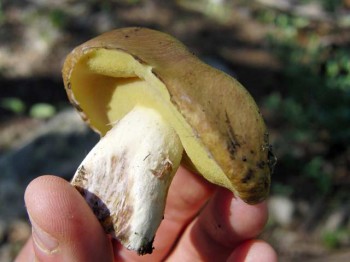
Okay so our second attempt to identify the little harbinger of mushroom season growing in the forest outside the house, about which I wrote on July 23, was the better one— as our little guy was a slippery jack (Suillus brevipes) and not a baby king bolete (Boletus edulis) as Gregg had hopefully surmised.
Still, who am I to poo-poo a slippery jack? They’re tasty—a fact we discovered last season after we got up the guts to taste one we’d spent several days watching.
Just Enough Info to Steer You Wrong
Identifying characteristics for Suillus brevipes, which is in the Boletaceae family along with Boletus edulis, include a cap that is “brownish, becoming ochre-brown with age; glutinous, smooth, shiny when dry; cuticle peels easily,” says Vera Stucky Evenson in Mushrooms of Colorado and the Southern Rocky Mountains (1997). She describes the underside of the cap, which has pores as opposed to gills, as containing tubes that are “pale yellow, dingy olivaceous at maturity…not staining.” (Some mushrooms, when you cut them, stain a particular color, but not Suillus brevipes.) The stalk is “white, becoming yellowish.”
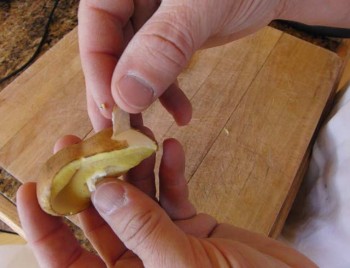
David Arora’s wacky book, All That the Rain Promises and More…(1991), also has an entry for Suillus brevipes, aka “Short-stemmed Slippery Jack.” He calls the yellow pores a “sponge” layer—again, in contrast to gills—and indicates that slippery jack is often found in pine forests. Both authors recommend removing the cap’s slimy skin before cooking. Turning the page in Arora, who speaks often of California, there is related edible mushroom, Suillus granulatus, aka “Granulated slippery jack,” which shares in some characteristics but has brown or red-brown spots on the stalk.
Notice that I’ve mentioned only a few of the traits listed in these books for the above mushrooms, leaving out details such as the results to be expected from a spore print of the cap, for example. Readers should understand that mushroom identification in particular must be conducted with great care—and careful study using multiple guidebooks is absolutely recommended. (Do I need to say again that this writer will not be held accountable?!)
As Evenson cautions, “Mistakes in identification, poisonous look-alikes, failure to use wise collecting techniques, and just plain foolhardiness result in numerous calls to emergency rooms and poison centers during the collecting season.” (The emergency number for the Rocky Mountain Poison Center is 1-800-222-1222, by the way.) She warns that foragers should not rely on pictures alone for identification, as look-alikes—some poisonous—exist for many mushrooms. Included in her book is a list of identification tips as well as a detailed explanation of the ways different mushroom poisons act on the system; so again, if you’re new to mushrooming like I am, then pick up a few guides, read them carefully, and exercise all proper caution and reverence when it finally comes time to tasting something. The library is always a good place to start.
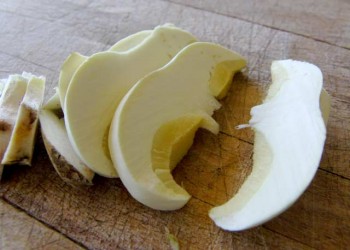
Arora points out that his little guide contains “less than 10% of the known species for Western North America”—a glimpse at how broad and varied the field truly is.
The Colorado Mycological Society offers periodic forays with live experts as well as a list of safety tips to adhere to when “Collecting for the Table,” including the advice to avoid “LBM’s” (Little Brown Mushrooms) and to “Put a few specimens of the mushroom you plan to eat in the refrigerator, so that a mycologist can positively identify the genera and species if it turns out a mistake has been made.”
My growing comfort level in identifying Suillus brevipes also stems from a mushroom-identification hike with Colorado Mountain College, which are offered each fall in Summit County.
Foiling Mr. Squirrel
The day after our initial find, then, I awoke early to the prospect of reexamining our early-season mushroom baby in the forest, but I waited for Gregg, as it was “his” mushroom after all. I paced around the house before he finally got up and we headed outside, and it was just in the nick of time—because when we got there, Mr. Squirrel was balanced on top of our mushroom, clutching it with his paws!
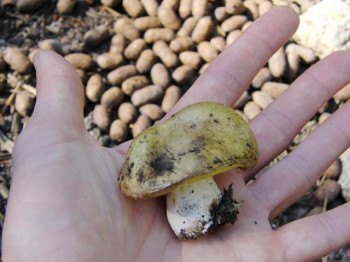
“You get out of here, Mr. Squirrel,” I yelled, fearing our mushroom would be covered with little bitey marks. We must have caught him just before the dreaded act, however, because the mushroom was unharmed. I went back inside for the knife while Gregg stood guard. It’s a good thing he did, too, because just as we picked it (by cutting off at ground level with a knife), the squirrel ran directly between his legs as if to say, “Why are you taking my mushroom?”
I don’t feel one bit bad about taking Mr. Squirrel’s mushroom; it’s not like we don’t give those little trouble-makers enough sunflower seeds anyway.
Inside the house, Gregg consulted the guidebooks to confirm our identification of Suillus brevipes and then sliced, fried, and served it to me with breakfast. It tasted great—and then I proceeded to feel ill for about a week afterwards.
“Maybe I didn’t cook it long enough?” Gregg surmised—as we have read that wild mushrooms should be cooked thoroughly, and our slippery jack breakfast side dish honestly wasn’t cooked as much as it could have been.
Not the Mushroom’s Fault
My symptoms included a nasty headache and feeling over-tired, burpy, and frustrated about it. Could it have been the Suillus? Was it not, in fact, a Suillus? Or maybe the culprit was that maggoty puffball? Suffice it to say I have had absolutely no interest in wild mushrooms for the last week—which is good, because it’s been dry and no more have presented themselves at our elevation.
We’re down at Gregg’s parents’ house in Aurora now as I write this—and come to find out I’m not the only one suffering from the aforementioned symptoms. That’s right; I caught a bug that both of his parents, who did not dine on wild mushrooms, also caught.
So it’s not either of the mushrooms’ faults at all!
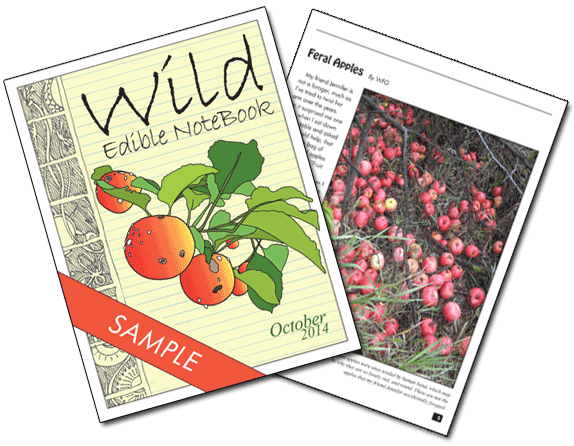
Hey! I wanted to drop you a comment and let you know I really enjoy visting your site. I’ve added it as a book mark and plan to return frequently. Keep up the good work! Cheers, Joey